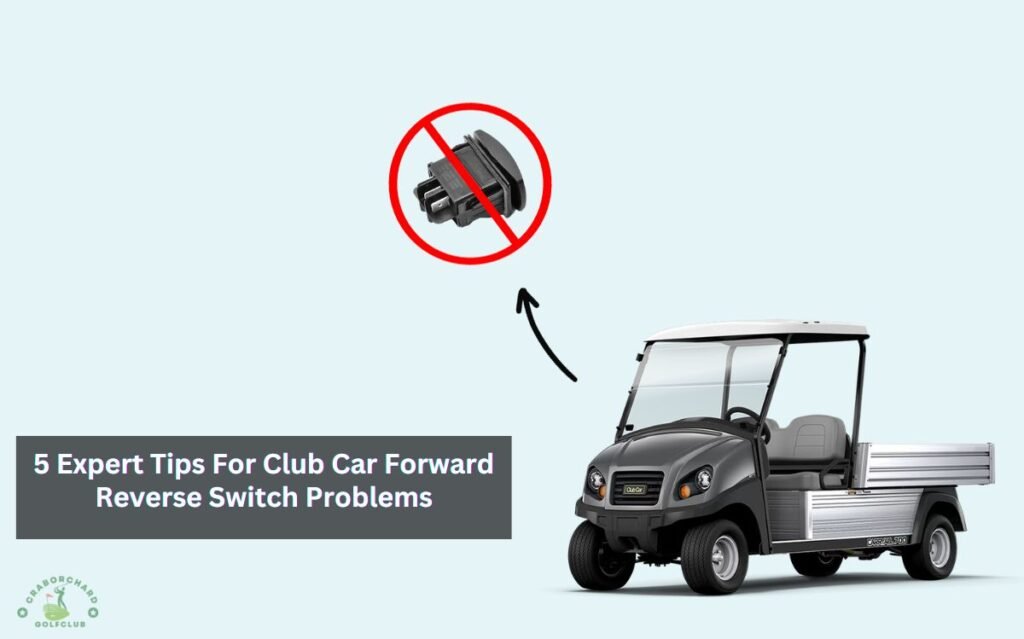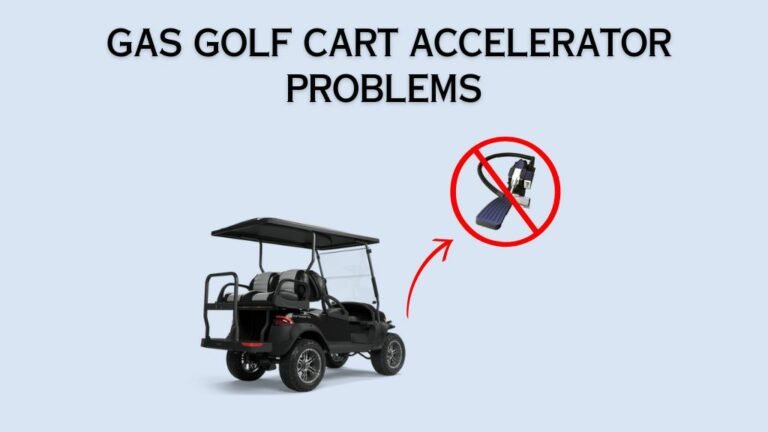5 Expert Tips For Club Car Forward Reverse Switch Problems
Forward reverse switch is quite a big issue because its responsible for the directional movements of your club car, and not knowing its related problems can pose a threat in your upcoming days. So what are the major club car forward reverse switch problems?
Some common problems include malfunctioning switches, loose or damaged contacts, damaged controllers, and so on. Even though these problems sound dire, they can be fixed by taking some steps like, tightening the wires, testing, replacing the switches, and many other ways.
Just knowing the problems isn’t enough, it’s important to know the causes and most importantly the solutions. To be able to treat the problem you should know about these factors so you can take steps immediately.

Hence, here’s the list of the 5 major club car forward reverse switch problems with everything you’ll need to know-
1. Switch is Overheating
The forward reverse switch gets overheated when used frequently. However, it can’t be taken lightly as excessive heat can significantly impact the performance of your club car’s direction, which is operated by the switch. Exposure to high temperatures causes increased friction with the internal parts of your club car and severely accelerates wear and tear. If not treated at the right time, it can potentially cause long-term damage to your club car.
This overheating doesn’t take place overnight. It happens due to
- Poor ventilation: when there’s inadequate ventilation in the area of the switch, the heat gets trapped and the temperature keeps rising, which eventually causes overheating.
- Excessive Loads: overloading your club car beyond its capacity, puts added pressure on the internal electrical components, which might cause burns and overheat the system.
- Excessive usage without breaks: riding the club car too much without a cool-down period increases the pressure and temperature in the motor and switch, which results in overheating.
- Damaged Battery: worn-out batteries get overcharged when on the run. Using the club car on damaged batteries overheats the switch.
Fix for overheating switch-
- Inspect the internal system of the golf cart.
- Look for any damaged wires or burnt spots in the electrical components. Make sure the battery is disconnected while doing so.
- Check if the motor operates or not through a multimeter, if it gives off a Burnt smell, inspect the wires connected to the switch.
- Inspect the batteries and test them. If the test comes negative, get a replacement battery.
- If the wires connected to the switch are burnt or frayed, replace them with the help of a professional.
Make sure after repair, you operate the club car on periodic cooldowns so that it won’t overheat quickly.
2. The Switch is Not Responsive
While gliding your club car, if you find out that the forward reverse switch is unresponsive, that means it’s not getting the signal to change direction. This can cause several dangers to your club car including accidents.
An unresponsive switch can be caused by several factors including-
- Failing battery: if the battery undergoes issues, the switch stops working. For instance, a worm out, low or corroded terminals of a battery will cause disruptions in electrical signals which eventually results in the switch not responding.
- Problematic Electrical terminals: electrical components will malfunction when the terminal is loose, frayed, or damaged due to exposure to foreign materials like dirt or moisture. This deterioration impacts the switch and makes it unresponsive.
- Worn-out switch: too much usage or wear and tear can physically damage the switch, which causes it to not work.
Fix for unresponsive switch-
- Check all the electrical wires that are directly connected to the switch and ensure whether they are loosely connected and corroded or not.
- If you find corrosion, clean the terminals and attach the wires if they’re loose.
- Use a multimeter to check where it passes the continuity test, If the readings don’t up the switch is faulty and will be replaced.
- Check the terminals of the battery. Replace or charge it if it’s low or damaged.
- Inspect and replace through a professional if you find any faulty parts.
Keep in check that you keep your club car switched off while inspecting, otherwise you might end up causing damage to the battery.
3. Forward Reverse Switch is Inconsistent
When your club car is showing irregular performance during a regular run, know that it’s a forward-reverse switch problem which might have many underlying issues.
This intermittent performance happens due to factors like-
- Faulty micro switch: the component that signals the controller to operate through the switch is a micro switch. When it’s detected or gets worn out for prolonged usage, you’ll notice an inconsistent switch function.
- Worn-out switch: Using the switch over time causes wear and tear, which toggles the electrical connections and causes this issue.
- Exposure to moisture: if the switch is exposed to moisture, it will become corroded and show irregular performance.
- Damaged wires: prolonged usage can damage the wires connected to the switch, which ultimately might cause this issue.
Fix for inconsistent forward reverse switch–
- Disassemble the switches and start inspecting the wear and tear of electrical wires, individual switch wires, and corrosion.
- Test every microswitch separately with a multimeter and get multiple switches if the test shows failure.
- If you find corrosion, clean the terminals and put moisture-resistant sealing to prevent further damage.
- If damage or wear and tear is found, Replace the switches with the help of a professional.
Don’t be scared when your club car acts inconsistent. Check all the terminals and consult a technician to do all the repairs.
4. Malfunctioning Controller
The power your club car runs through is generated by a controller who’s also responsible for handling your club car. With a malfunctioning controller, you’ll not only face common club car issues but also forward reverse switch problems.
Factors that cause a malfunctioning controller include-
- Blown-out Fuses: when the fuses connected to the controller blow out, it causes electrical disruption and results in a malfunctioning controller.
- Damaged wiring connection: the wires connected to the controller can easily tear apart under heavy pressure and even face damage due to environmental exposure. This wear and tear damage the controller.
- Controller failure: for overuse, the resistors for transistors start falling, and when it does the controller faces damage.
Fixes for a malfunctioning controller-
- Disconnect the battery and inspect the electrical wires connected to the controller for damage or wear and tear.
- If the lines are loose, tighten the connections.
- Check the fuses and test it with a multimeter, if it fails replace the blown fuse.
- For damaged wires, get a replacement and connect it properly with the controller with the help of a professional.
- If you find the controller to be fully damaged, replace it with a new controller.
Take immediate action if you find a damaged controller as it can affect other components as well.
5. Loose Electrical Wirings
A common forward reverse switch problem is the loose electrical wiring. Problematic wirings cause the club car to stop and even disrupt the switch to work properly.
You will encounter loose electrical wirings when-
- Constant vibration: when you constantly operate your club car, especially through uneven areas, a lot of movement and vibration takes place which gradually loosens the electrical wires connected to the switch.
- Poor installation: during the initial setup of the switches, when the wires are not securely installed due to technical issues, they easily loosen up during operation and cause the switch to not work.
- Deterioration: if environmental factors like dirt or debris reach the terminals of the wires, it can get corroded and disconnect from the switches.
Fix for loose electrical wires:
- Disconnect the battery connections before you start the inspections.
- Check the electrical wires for wear and tear, and see if it’s loose.
- Check the switch terminals from where the wires are connected to the engine and see whether it’s fighting secured or not.
- If the wire is fine and has no wear and tear, tighten it with appropriate tools.
- If the wires have corrosion or are torn apart, repair them by reconnecting or splicing the wires with replacements. Take help from a professional if necessary.
Be wary of the wires when you inspect, if you’re not confident it’s better to inspect, test, and repair through a professional.
our verdict on forward reverse switch problems
While riding, club car forward reverse switch problems can pose a dire threat if not regulated. Especially if you’re unfamiliar with the causes, you might end up causing more damage to your previous club car.
Hence, now that you know what the causes are behind each issue, take appropriate steps and follow the instructions so you can salvage your club car at all costs.
>> Important sources: https://www.clubcar.com/



![Troubleshooting Guide For Star EV Golf Cart Problems [2024!]](https://www.craborchardgolfclub.com/wp-content/uploads/2024/01/Star-EV-Golf-Cart-Problems-768x480.jpg)
